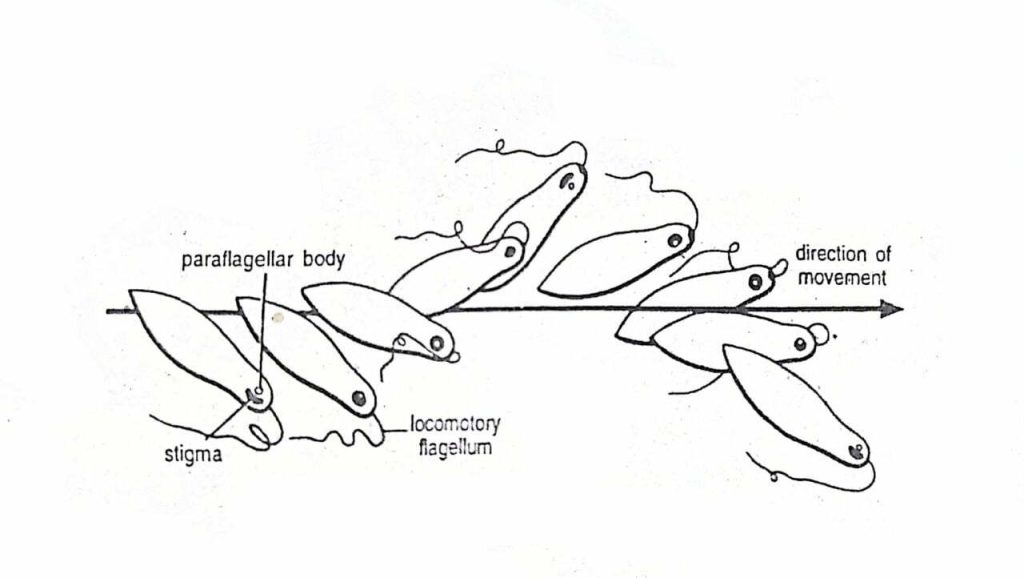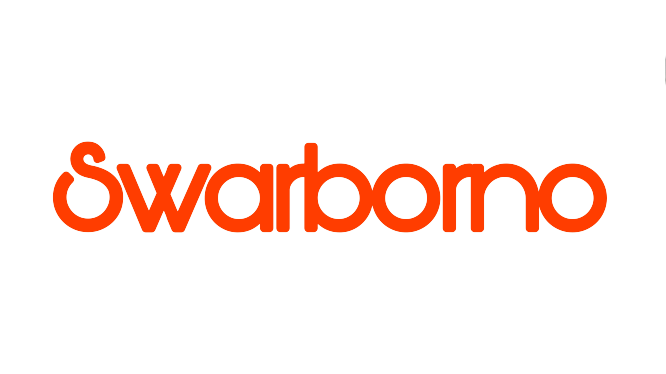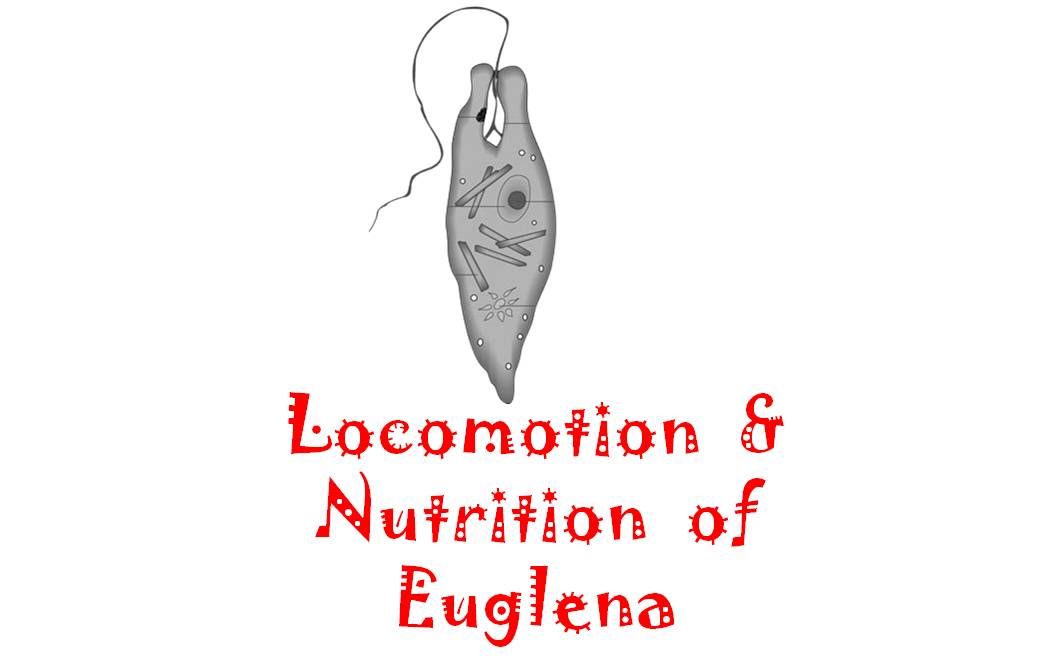Euglena is a unicellular protozoan that is a very tiny and microscopic organism. In this article about Euglena, we will learn about the locomotion of Euglena and the nutrition of Euglena. It can be identified both as an animal and a plant. It is identified as an animal because it can move from one place to another and can receive food through its mouth. It is also identified as a plant because it has chloroplasts and it can produce its own food by performing photosynthesis.
Locomotion of Euglena
- Euglena can perform locomotion or movement like an animal.
- It has to move from one place to another in search of light to perform photosynthesis.
- Two features on its body help it to perform locomotion and they are the flagellum and the stigma or the eye spot.
Euglena viridis can perform two types of locomotion or movement. They are 1. Flagellar movement and 2. Euglenoid movement.
1. Flagellar Movement

Fig: Flagellar movement of Euglena
-
-
- Euglena can swim freely in water with the help of its flagellum.
- It has a single and long flagellum which is the main locomotor organ of Euglena.
- The flagellum is directed backward towards the side bearing the stigma while Euglena swims.
- The flagellum moves in a rotary motion with the undulation passing from the base to the tip.
- This motion pulls the organism forward and the body rotates spirally.
- It rotates in a clockwise direction.
- During the flagellar movement, two types of forces generate. They are lateral forces and longitudinal forces.
- Lateral forces cancel each other.
- Longitudinal forces push the water backward and produce a forward thrust and that’s why Euglena moves forward.
-
2. Euglenoid Movement
-
-
- Euglenoid movement is also called wriggling movement.
- It is a worm-like movement.
- The flexible pellicle helps Euglena to perform the peristaltic activity.
- The body becomes shorter and wider from the anterior end to the posterior end.
- With this activity, the animal creeps on the bottom and this is the euglenoid movement.
-
Nutrition of Euglena
Euglena viridis is both autotrophic or holophytic and saprophytic or saprozoic animal. It can be identified both as an animal and a plant. It is identified as an animal because it can move from one place to another and can receive food through its mouth. It is also identified as a plant because it has chloroplasts and it can produce its own food by performing photosynthesis.
1. Holophytic or Autotrophic Nutrition
-
-
- This is the chief mode of nutrition of Euglena.
- By this system, Euglena produces food like a plant.
- Euglena performs photosynthesis with the help of chloroplasts and sunlight.
- The chloroplasts have chlorophyll a, and chlorophyll b and these chlorophyll absorb energy from the sunlight.
- With this energy, a hexose sugar forms and the sugar is then transferred into paramylon.
- Paramylon and starch are not the same and the paramylon can be stored as reserve food for the future.
-
2. Saprophytic or Saprozoic Nutrition
-
-
- This mode of nutrition occurs during the night.
- In this mode, Euglena loses its green color.
- In this mode, Euglena absorbs, decaying organic matter that dissolves in the surrounding water, through the pellicle.
- Euglena secrets digestive enzymes to digest the accepted food. Secreting digestive enzymes is animal-like in nature.
-
————–THE END————-
Read More:
- Structure of Euglena with Labeled Diagram
- Reproduction of Euglena | Binary Fission, Multiple Fission & Encystment | Diagram
- Encystment of Euglena
- General Characters of All Phylum of The Invertebrates.
Reference:

